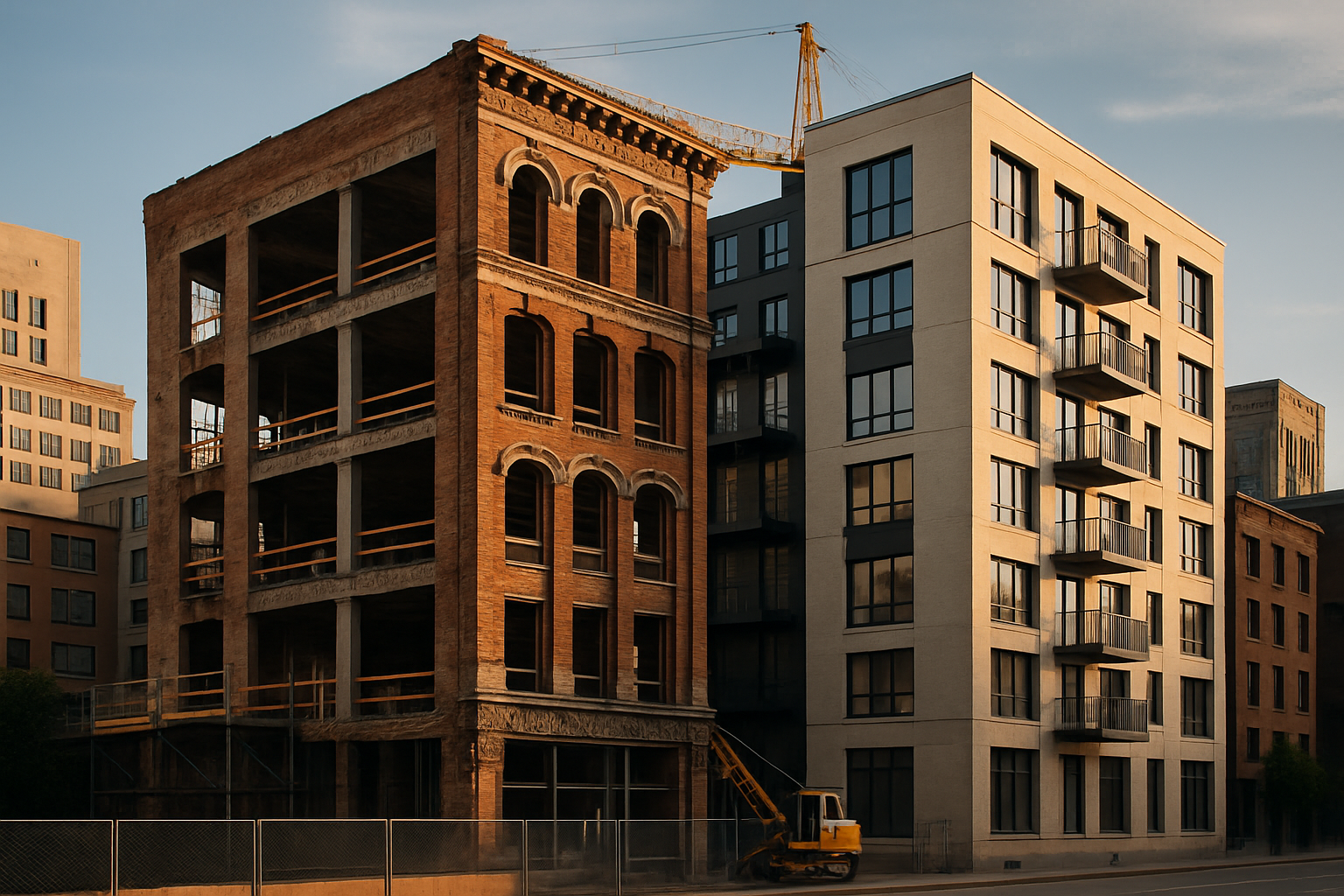Revitalizing Urban Spaces: Adaptive Reuse in Property Law
Introduction: Urban landscapes are evolving, driven by a legal framework that encourages the transformation of abandoned structures into vibrant community spaces. This article delves into the intricate world of adaptive reuse in property law, exploring how legal innovations are reshaping cityscapes and fostering sustainable urban development.

Historical Context and Legal Evolution
The roots of adaptive reuse can be traced back to the 1960s and 1970s when preservationists began advocating for the protection of historic buildings. Initially, legal frameworks were primarily focused on preventing demolition. However, as urban renewal projects gained momentum, lawmakers recognized the need for more flexible approaches to urban development.
The National Historic Preservation Act of 1966 laid the groundwork for adaptive reuse by providing incentives for preserving historic structures. Subsequently, state and local governments began implementing their own preservation laws, often incorporating provisions that facilitated the repurposing of older buildings.
Current Legal Landscape
Today, adaptive reuse is governed by a patchwork of federal, state, and local laws. At the federal level, the Tax Reform Act of 1976 introduced tax incentives for rehabilitating historic buildings, which has been a crucial driver of adaptive reuse projects. Many states have followed suit, offering additional tax credits and grants to encourage the repurposing of older structures.
Zoning laws have also evolved to accommodate adaptive reuse. Many cities have introduced overlay districts or special use permits that allow for greater flexibility in repurposing buildings. For example, some jurisdictions have created live-work zones that enable the conversion of industrial spaces into mixed-use developments.
Legal Challenges and Innovations
Despite progress, adaptive reuse projects often face significant legal hurdles. Building codes designed for new construction can be particularly challenging to navigate when repurposing older structures. In response, some jurisdictions have adopted adaptive reuse ordinances that provide alternative compliance methods for existing buildings.
Another major challenge is addressing environmental concerns, particularly in former industrial sites. The Comprehensive Environmental Response, Compensation, and Liability Act (CERCLA) has been both a hindrance and a help in this regard. While it imposes strict liability for environmental contamination, amendments like the Brownfields Revitalization Act have provided legal protections and financial incentives for redeveloping contaminated properties.
Case Studies in Adaptive Reuse Law
Several high-profile cases have shaped the legal landscape of adaptive reuse. The transformation of New York City’s High Line from an abandoned railway into a public park required innovative legal solutions, including the creation of a special zoning district and the transfer of development rights.
In Los Angeles, the Adaptive Reuse Ordinance, first passed in 1999, has been a model for other cities. This ordinance streamlined the approval process for converting older commercial buildings into residential units, leading to the revitalization of downtown Los Angeles.
Future Directions in Adaptive Reuse Law
As cities continue to evolve, so too will the legal framework surrounding adaptive reuse. Emerging trends include:
-
Integration with smart city initiatives: Laws are being developed to facilitate the incorporation of smart technologies into repurposed buildings.
-
Climate resilience: New regulations are focusing on adapting older structures to withstand the impacts of climate change.
-
Social equity considerations: There’s a growing emphasis on ensuring that adaptive reuse projects benefit diverse communities and address issues of gentrification.
-
Pandemic-responsive design: In the wake of COVID-19, legal frameworks are evolving to support the conversion of office spaces into residential or mixed-use developments.
Conclusion
Adaptive reuse represents a powerful tool for urban revitalization, blending preservation with innovation. As the legal landscape continues to evolve, it will play a crucial role in shaping the cities of tomorrow. By fostering creativity in urban development while respecting historical and cultural heritage, adaptive reuse law is helping to create more sustainable, vibrant, and resilient urban environments.





